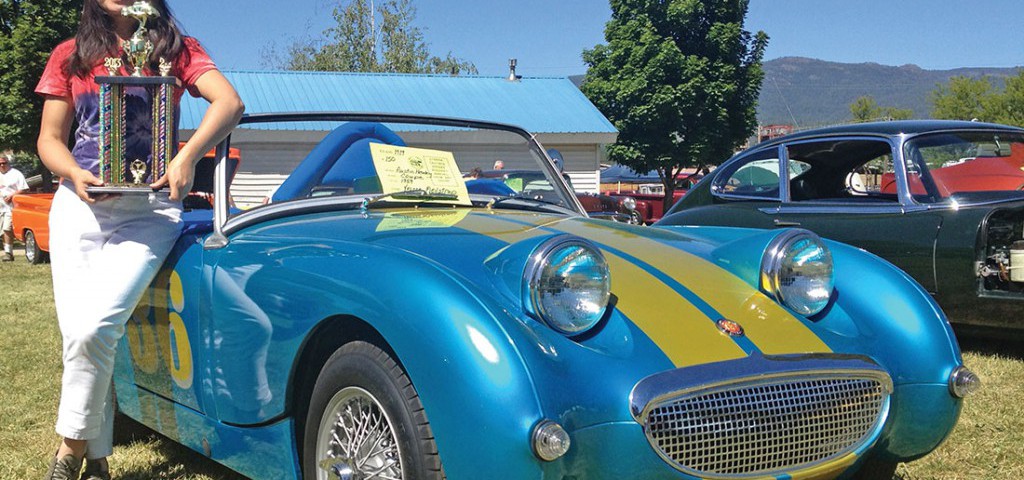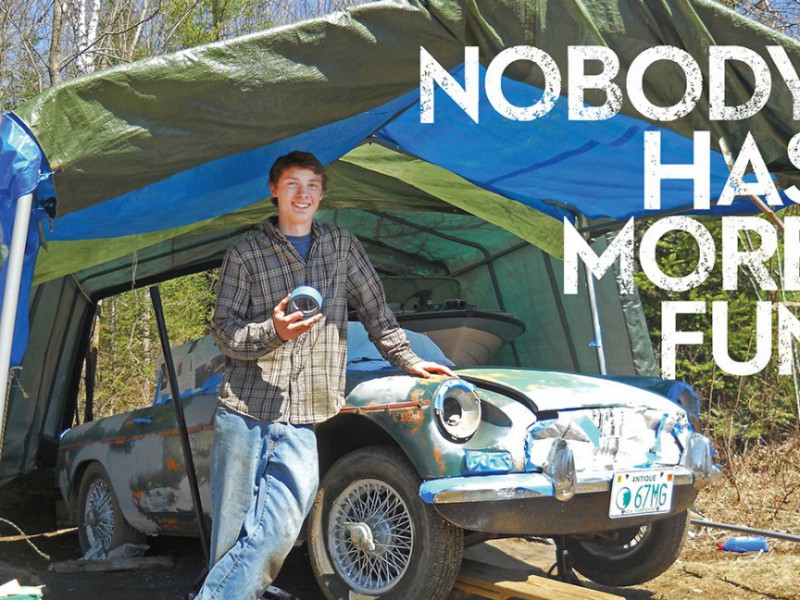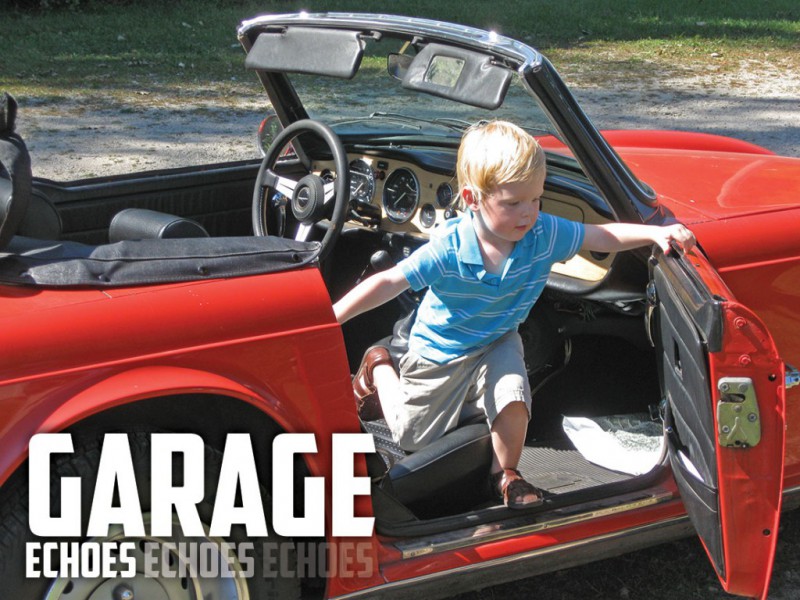buh-loh-nee*
1. The result of spending way too much money in an attempt to make an old car look old.
2. A descriptive term used to deceive a potential buyer by creating an illusion of proper maintenance and care.
3. Justification for excessive cost related to owning a British car.
British cars have a reputation for being a tad quirky, and if you are going to shop for one you are going to hear all kinds of warnings from your uninformed friends, especially Porsche and Corvette owners who don’t have a clue about British cars let alone their own makes. To be a British car buyer you have to be inquisitive as most cars come with their own special history and idiosyncrasies, almost guaranteeing a list of Previous Owners and the damage they have caused with which you will have to deal.
In the British car world there is a wide spectrum of personalities and it would take a team of behavioral experts to figure out why some guy in Newton, Iowa stuffed a 2012 Chrysler Hemi into a 1960 Austin-Healey Sprite. In my recent search for yet another LBC, I found one particular land mine out there that needs to be defused quickly before it claims more innocent lives: the use of the word “restored*.”
Valuing and seeking authenticity a little more than the average LBC owner, I get ruffled when a seller or PO willfully alters the authentic state of a truly collectable car and then insults me as they attempt to convince me that it was done in the name of restoration. One would be naïve to think that there is still a bone stock unmodified MGB in running condition out there for $4500, but if a seller wants to sell a metal flake purple 1967 Spitfire with a header and describe it as restored, it’s not just his ignition timing that may be retarded. Even in my own garage there exists the stark difference in value and desirability of stock versus modification as my cars are kept in close, exacting condition as manufactured…parked next to my wife Yvonne’s heavily modified and enhanced cars complete with roll bars, free flow exhaust systems and custom interiors.
In my recent quest for a metal dash MGB I encountered an alarming overuse of the word restored. Being a classic guy, I pulled off the shelf a real dictionary made of paper and printed back in the 70s. Webster tells me it’s “to put something back to its original or previous state.” So, it would follow that any change made to the car that is not original would suggest that you have unrestored the car or are actually taking it away from being restored.
In the past two months I have been sifting though MGB ads in Hemmings and on the web, looking for the next love of my garage. Now that I have found the car that I am sure will be the envy of the automotive world and will put me on top of the LBC car owner food chain, I find it necessary to warn all others of the heinous misuse of the word restored going on out there by sellers preying on the innocent.
Where are the Men of Honor?
When you realize the MGB was at one time the best selling sports car in history, you can imagine all of the modifications that have been done to these cars throughout the years. Some good and some that make you wonder. But with those enhancements each car moved slowly away from the condition of delivery from the manufacturer. No one can argue the superiority of radial tires and the positive affect they have on safety and performance, but they are not original in some cases. I have yet to see a post-1967 MGB with that useless hunk of ballast mounted high above the alternator, yet the sellers of those cars still label them as restored. Ripping off a smog pump does not constitute an act of restoration even if you sell the pump to a recycler in an attempt to restore the planet. And take for example, a new paint job which may not necessarily be a positive step in the restoration process unless you do it in the color, material and quality as originally manufactured. And for Pete’s sake, strip off the old paint if your intention is to restore the car. Even Leyland did not supply cars with bad re-spray jobs.
Original MGBs had crappy vinyl tops, and not nice cloth ones. Yes, I also think the cloth tops are better in every way, but they push the car into the category of over-restored, not restored. Tube shocks have no place on a properly restored MGB, nor do Weber carburetors, aluminum radiators, Minilite styled wheels and stainless steel exhaust systems. They are all desirable enhancements (except the Weber), but please don’t describe your car as restored if you do decide to install them.
There is a $20,000-plus 1964 out there that has apparently won several show awards but has an alternator and was promoted as “restored to the greatest detail.” In all likelihood, the polarity had been changed as well as the number of batteries. The tachometer would either have been from a later car or modified to work in the new electrical environment. All very nicely done and desirable to many, but definitely not appropriate on a car described as restored and priced accordingly. Enhanced, or updated would probably be a more appropriate description.
Here, on the other hand, is an example of an ad that caught my attention:
“This has been my project car for 26 years. I have always kept it running, but there is always more that could be done. It really needs a complete rebuild (Paint, Engine, interior etc.) to make it a daily driver again. That rebuild will be up to a future owner. I purchased the car when I was 24 years old, and it was my daily driver for about 2 years, I put about 35,000 miles on it in the first 2 years I had owned it, and only about 5,000 in the last 24 years. The car is complete and runs and drives. Only non-stock modifications made to the car is that it has a Weber carb, electronic ignition and stainless exhaust. Mileage is probably over 186,000, I don’t really know for sure.”
Now this is a guy I want to talk to. My impression is, he is trying to honestly represent the condition of his car, and subsequently will probably be an honest person to deal with and more accurately used the word “rebuild” while avoiding “restored.” He is indeed a man of honor.
Let’s not be purist snobs that believe every car should be kept in stock unaltered condition. Your car is yours and the joy of ownership comes from making the car your own. Do what it takes to keep it alive and motoring—just be honest about it.
Restoring a car is a very difficult, expensive and extensive process and those who undertake it should not be diminished by misrepresentation of lesser cars. There is good reason that restored examples of any classic top the list when it comes to value, only to be exceeded by original examples in show condition. Let’s face it, it takes balls to drive around in a bone stock TC. There have been so many improvements available throughout the years that make all of our LBCs just a little more enjoyable and tolerable. Therefore, simple car ownership and all of the upgrading, modifying, enhancing and customization that goes with it reduces the number of truly excellent examples of original cars.
I just bought my next “restoration project” which we think is a 1968 MGB. It of course comes with a long list of stories and POs. It was obvious the car was going to need a new steering wheel prior to its uphill pilgrimage from San Francisco over the Sierras back to Reno. As our planned route would take us over Donner Pass where so many have died before us, we thought it would be prudent to have a steering wheel on the car that would not deteriorate under the stress of actually steering the car. My intention is to restore the car exactly as manufactured so I needed to find a good original steering wheel. I turned to a friend of mine who had a pile of partially dismantled metal dash MGBs sitting in a mass grave next to his shop. I asked him if he had a suitable steering wheel and he gave me clearance to wade through the pile on my own. In the middle of the scrap pile, sitting on what appeared to be the battery shelf of a faded blue pull handle carcass, was an old wooden steering wheel attached to the steering shaft. My heart began to pound, even my voice changed. I asked him what he wanted for it and he said I could have the wheel since “nobody wants those any more,” but the steering shaft had to stay. So I wiped 30-plus years of crud off the old wheel to find out it was an original six bolt Moto-Lita steering wheel with an Astrali hub. What would be more appropriate for a restoration than that? After all Webster did say “…original or previous state” and this is truly a period piece that could only enhance my car. Now all I had to do was a simple restoration job to my newfound example of automotive history.
I used up a couple of Scotch-Brite pads sawing through the 30-year old finish. What was revealed was the most dried out piece of mahogany laminate ever seen. It looked like it just came out of a tomb sealed beneath an Egyptian pyramid for the last 5000 years. I took some wood grain filler to the low spots and let it dry over night. The next day I smoothed it out and then looked for a good finish that would help protect me from splinters on the drive home. I found a can of UV blocking polyurethane that would probably be close to bulletproof if I could get enough of it to stay on the surface and not get sucked into the ancient wooden sponge. After five coats of poly the wheel looked useable and pretty damn good for having sat in the Nevada desert most of its life. I was just packing it up to get ready for the trip to pick up the new car when Yvonne, my loving and caring co-driver, owner of the world’s only metallic candy apple blue Sprite says to me, “You aren’t going to put that steering wheel on your new car are you? The original finish would have been varnish and not polyurethane. That’s not really original.”
By Jay Meilstrup











'RE•STORED*' has no comments
Be the first to comment this post!